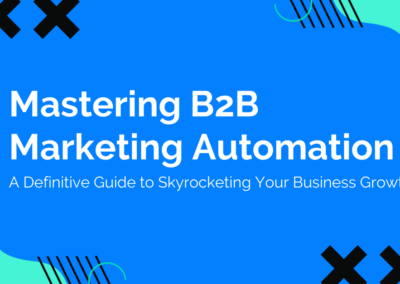Demand generation is everything you do to get customers excited about your company’s product and services. Demand generation programs can help your organization reach new markets, promote new product features, build consumer buzz, generate PR, and re-engage existing customers.
Set Your SMART Goals
A good first step for creating your demand generation strategy is to set some SMART goals (Specific, Measurable, Attainable, Relevant, Timely). For example, a company just starting out may want to set a goal for website visits. More mature organizations may want to gain more contacts, or convert more leads into customers.
Develop Your Plan
Once you’ve determined your SMART Goals, you’ll need a plan to achieve them. One way to start doing this is to get to know your customers through user feedback, research and conversations with them. Ultimately, you’re trying to figure out what kind of content you’d like to create to attract and nurture buyers, and how you’re going to get it to them. If you’re struggling to understand your prospects’ needs, pick up the phone and have a conversation with existing customers/buyers.
Define a Lifecycle Stage for Every Contact in the Funnel
This is a great opportunity to develop your marketing and sales alignment practices. Get marketing and sales to collaborate on their definitions for each lifecycle stage. What criteria does a contact need to meet in order to be considered a subscriber, a lead, a marketing qualified lead, a sales qualified lead, an opportunity, a customer, and an evangelist?
Having these lifecycle definitions in place will help you foster a strategic mindset and develop long-term customer relationships.
Diagnose the Funnel by Strengths and Weaknesses
Having a strategy in place doesn’t mean it’s the best that it can be. Even successful demand generation strategies need to be tweaked every now and again. Data, quantitative analysis, and testing will be important to this process. As trends begin to emerge from your marketing programs, you’ll be able to connect marketing activities to key success metrics. Marketing automation software will help you run A/B tests, choose the right content, and customize timing for each of your marketing campaigns and customer segments.
Create Campaigns Prioritized to Solve Weaknesses
In addition to to using the right channels and creating content your leads will love, you need to make sure that you’re targeting the right people with the most appealing offers possible. To succeed with demand generation, your marketing team will need a clear personalization strategy. Once you’re acquainted with your buyers’ needs and can anticipate marketing trends, you can fuel your marketing programs with enhanced levels of personalization.
Define an SLA between Sales and Marketing
Marketing and sales activities go hand-in-hand. With top-notch content and well-timed touch points, marketers guide prospects through the conversion funnel. And when opportunities are ready to become customers, sales teams can step in to navigate logistics, build the business relationship, and close the deal. Demand generation programs ensure that companies effectively reach their strongest-fit customers.
Sales Enablement
Demand generation is the marketing system that bridges the gap with your company’s sales and revenue operations. It may include multiple touch points, from blogging, to email list creation, to social media promotion — all inbound marketing tactics that are part of a company’s overall demand generation strategy. Common demand gen tactics include blogs, social media, videos, podcasts, newsletters, and ebooks. In other words, content-driven resources that establish your company as a thought leader, influencer, and information hub in your industry. Focus on creating quality content that pulls people towards your company. Over time, a high proportion of this inbound traffic will convert into paying customers. In fact, inbound leads are 5x more likely to become customers than outbound leads. In addition to closing deals, you delight customers and build lasting, long-term relationships with your community.
Review and Optimize
Once you start to see results with your demand generation strategy, you can then start to determine what parts of your plan had a positive impact on achieving your goals. Demand generation is a cyclical process. There’s always a way to optimize your strategy, whether it’s through more in-depth data analysis, a higher level of personalization in your outreach efforts or by researching trends and adapting to them before they become mainstream. Ultimately, the success of demand generation stems from your ability to connect with target customers.



